Disney touts their theme parks as “The Happiest Place on Earth.” After leading my second workshop to Bhutan, I’m going to once again pronounce it, “The Friendliest Place on Earth.”
Most people’s response when you tell them you’re going to Bhutan is, “Where?” This tiny Himalayan Mountain kingdom, tucked in between India and China, is largely unknown to most of the world. For photographers, that’s a good thing. Its 700,000 citizens haven’t yet tired of the small number of visitors, and kindness and courtesy are a key part of their Buddhist culture. However, it’s not an easy place to visit.
I’ve just returned from leading a workshop in Bhutan, and to get there from Kansas City requires over a day of travel, starting with a four-hour flight to San Francisco. From there it’s about twelve hours over to Asia (Tokyo or Beijing for me) and then another six-and-a-half hours to Bangkok. Oh, and after that, another three hours to Paro, Bhutan’s only international airport. You also need a visa to enter, but you can’t get that on your own. It has to be arranged by a Bhutanese tour company, which means you can’t travel to or around the country on your own. And finally, accommodations and food are pretty basic. So is it worth it? Absolutely!
As photographers, we’re always looking for places that are different from what we’re used to. Different people, different cultures, different dress (the men wear knee-length robes), different lifestyles, different scenery. Bhutan offers all of that and more. And as I said before, it’s filled with a people who, almost without exception, are happy to let you not just photograph them, but learn about their way of life.
Enough talk. Let me show you some photos from the trip, and the stories that go along with them. (If you, like me, enjoy doing people photography, consider joining me on my workshop to Peru next September)
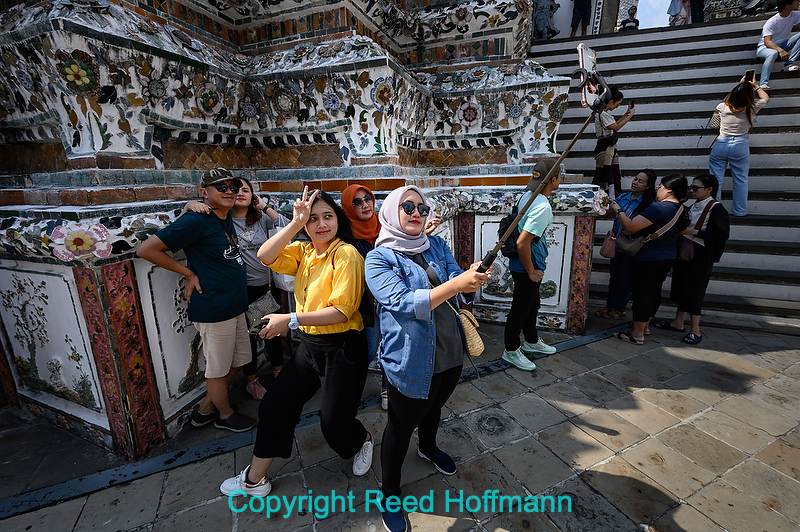
To get to Bhutan you need to fly in from Bangkok or Delhi. Bangkok doesn’t require a visa, so that’s what we do. And for those that come in a day early, I arrange a tour of Bangkok. It seems that wherever you go in the world, people are taking selfies. These young women were at Wat Arun (Temple of Dawn) in Bangkok. Nikon Z 6, Aperture Priority, Sunny white balance, ISO 100, 1/160 at f/10 in Matrix metering, -0.7 EV, Nikkor AF Zoom 14-30mm f/4 lens at 16mm.
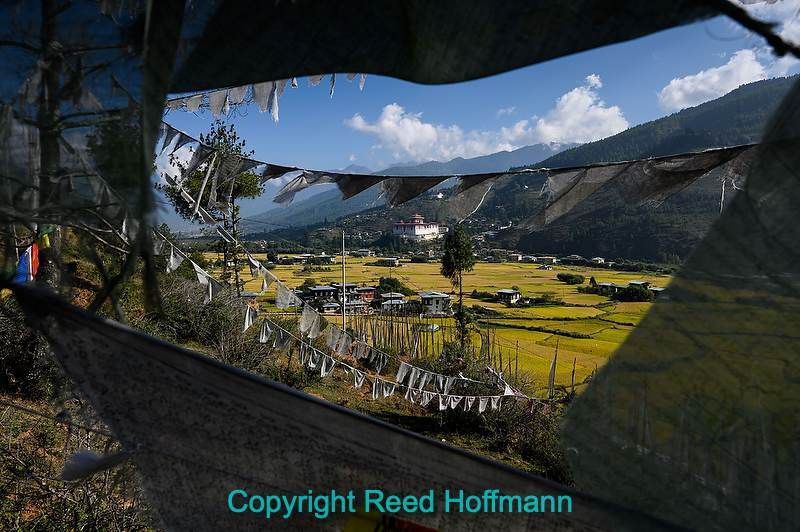
We had a 5am flight from Bangkok to Bhutan (Paro), which meant we landed early enough to enjoy a full day of photography. After loading everyone on the bus, I asked the guide to take us someplace high where we could get a view of the rice fields. Prayer flags are common, so I used them to frame this scene of those fields and a Dzong (old fort) on the hill across the valley. Nikon Z 6, Aperture Priority, Sunny white balance, ISO 125, 1/160 at f/13 in Matrix metering, -0.7 EV, Nikkor AF Zoom 14-30mm f/4 lens at 22mm.
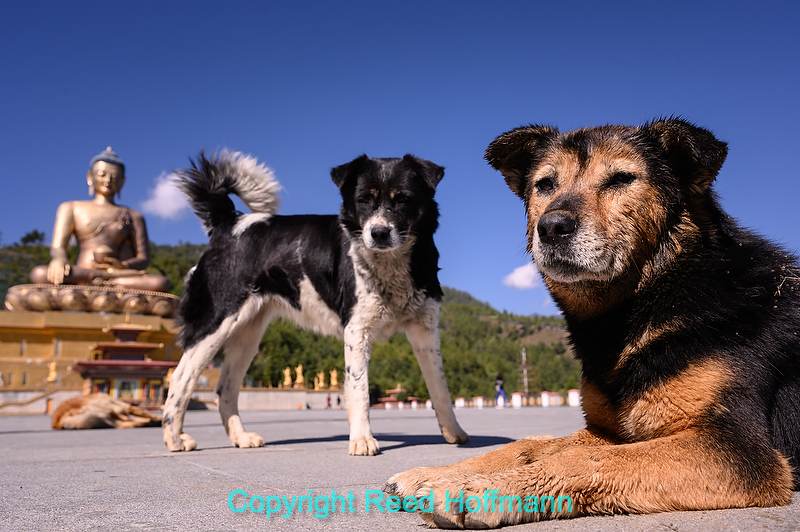
We started our second day in Bhutan with a drive up to the huge Buddha statue overlooking the city. As a Buddhist country, people feel responsible for all animals, so even the stray dogs we saw were well fed and cared for. Realizing that could create an overpopulation problem, Bhutan has a sterilization program to keep their numbers under control. Nikon Z 7, Aperture Priority, Sunny white balance, ISO 125, 1/500 at f/8 in Matrix metering, -0.7 EV, Nikkor AF Zoom 14-30mm f/4 lens at 26mm.
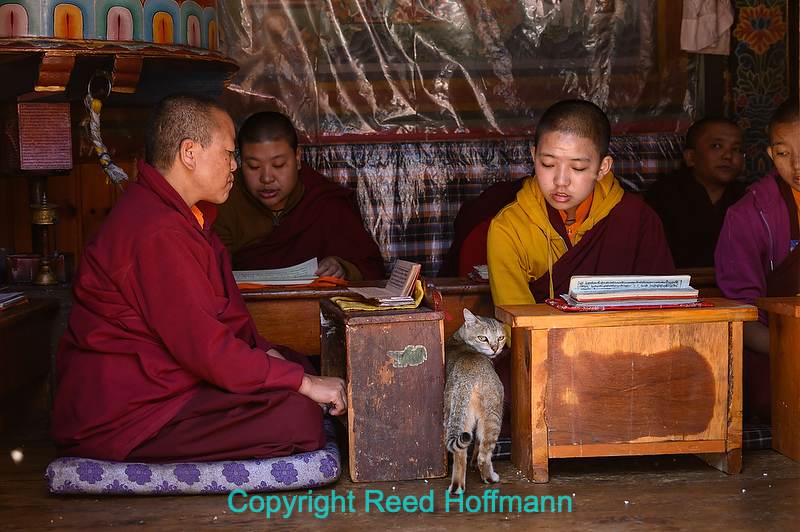
We visited a number of monasteries and nunneries, and while photography is not premitted inside, you can stand outside and take photos. Which is how I caught this cat isiting these nuns chanting prayers. Nikon Z 6, Aperture Priority, Sunny white balance, ISO 450, 1/100 at f/5.6 in Matrix metering, -1.3 EV, Nikkor AF Zoom 24-70mm f/4 lens at 63mm.
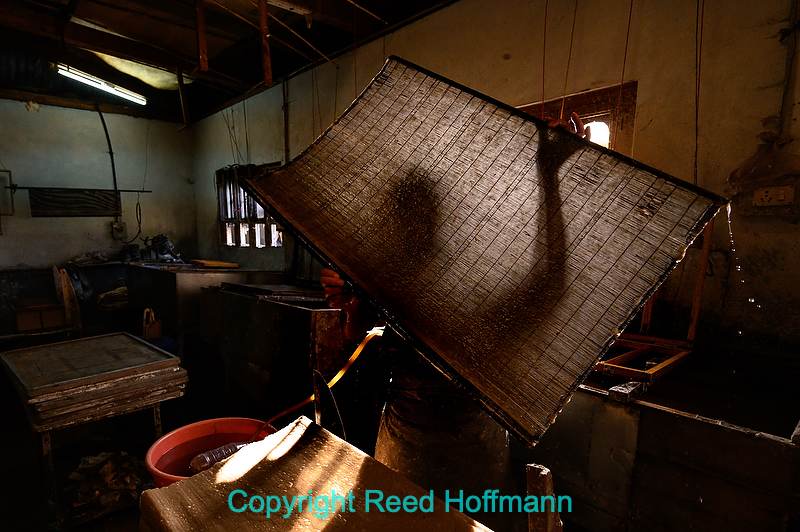
Of the many places we visited in Thimphu (the capital), one of my favorites is a papermaking shop. It’s fascinating to watch them turn pulpy water into sheets of paper, and makes for some nice photos too. Nikon Z 7, Manual, Auto white balance, ISO 3200, 1/500 at f/4.5 in Matrix metering, -1.0 EV, Nikkor AF Zoom 14-30mm f/4 lens at 17.5mm.
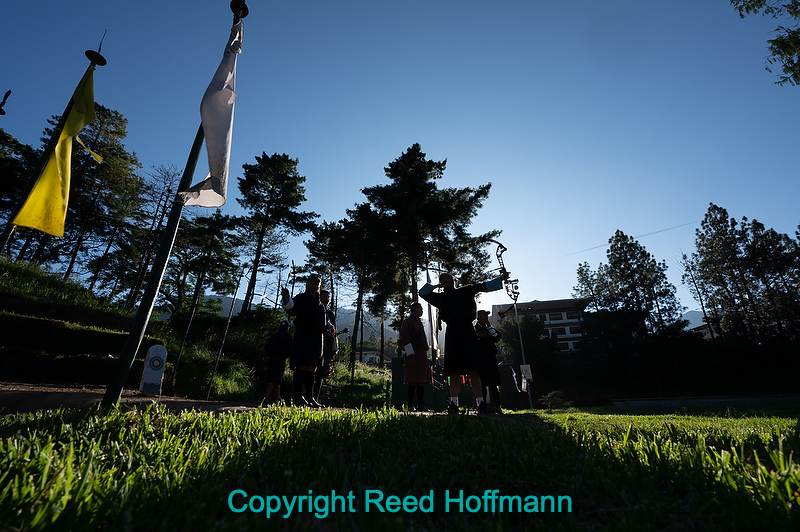
Archery is the national sport in this small country, and we were lucky enough to watch and photograph matches on two different days. It truly is fascinating to watch, since the target is 145 meters (476 feet) away! In this case I chose to take advantage of the strong shadows and set my camera down in the grass. I used a small aperture attempting to get a sunburst through the trees, but instead captured the arrow streaking off the bow thanks to the slow shutter speed. Nikon Z 6, Aperture Priority, Sunny white balance, ISO 100, 1/60 at f/16 in Matrix metering, -0.7 EV, Nikkor AF Zoom 14-30mm f/4 lens at 15.5mm.
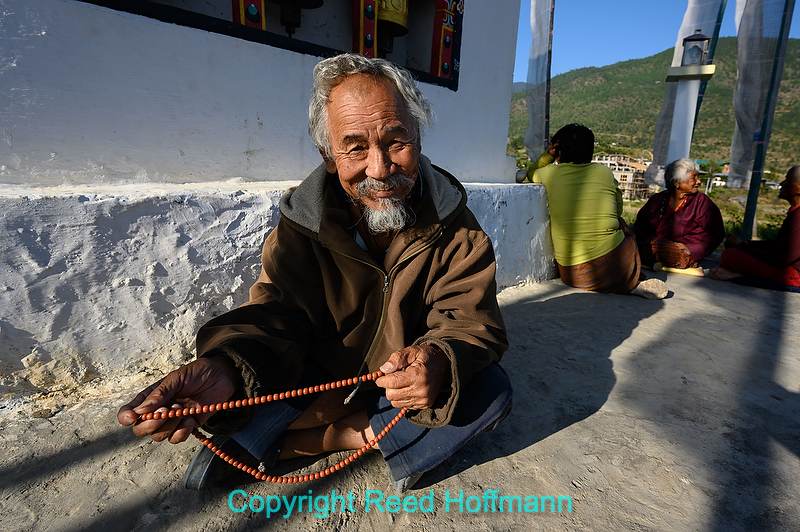
In all of our nine days there, I’d guess we only had a few people who said “No” when we asked if we could photograph them. Most, like this man praying at a Stupa, were gracious and happy to accommodate us. Nikon Z 7, Aperture Priority, Sunny white balance, ISO 100, 1/640 at f/5.6 in Matrix metering, -0.7 EV, Nikkor NIKKOR Z 14-30mm f/4 S lens at 15mm.
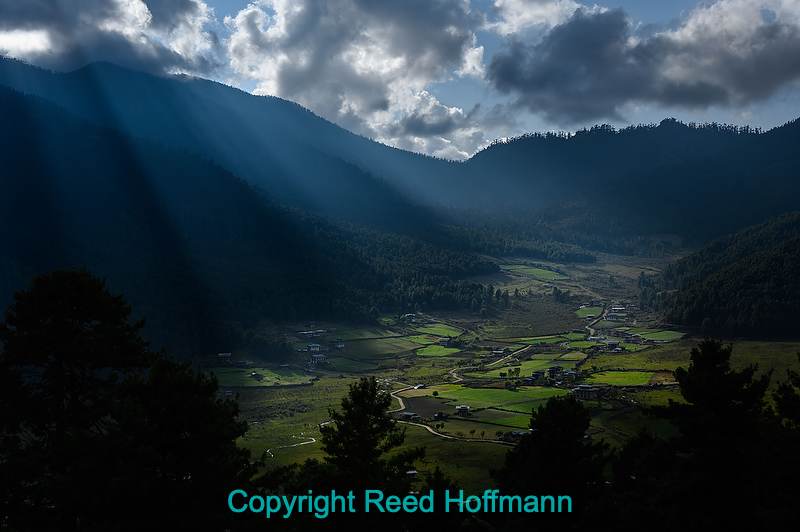
We saw a brief rain shower once or twice, but otherwise had sunny skies, often filled with puffy white clouds. This scene of shafts of light on rice fields was behind a monastery we were visiting at 9000-ft. Nikon Z 7, Aperture Priority, Sunny white balance, ISO 100, 1/1000 at f/7.1 in Matrix metering, -1.7 EV, Nikkor AF Zoom 24-70mm f/4 lens at 49mm.
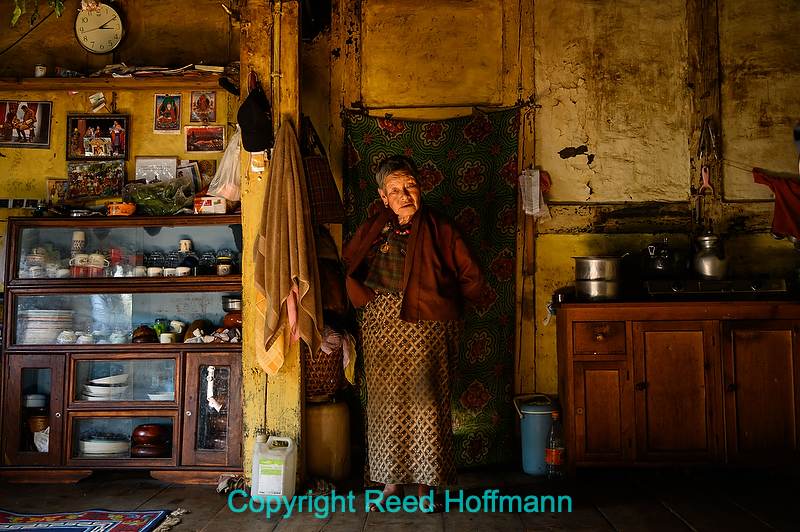
We spent two days in a valley with an isolated farming community, which included a home visit to see how people lived and sample their butter tea. Nikon Z 7, Aperture Priority, Sunny white balance, ISO 800, 1/30 at f/4 in Matrix metering, -1.3 EV, Nikkor AF Zoom 24-70mm f/4 lens at 36mm.
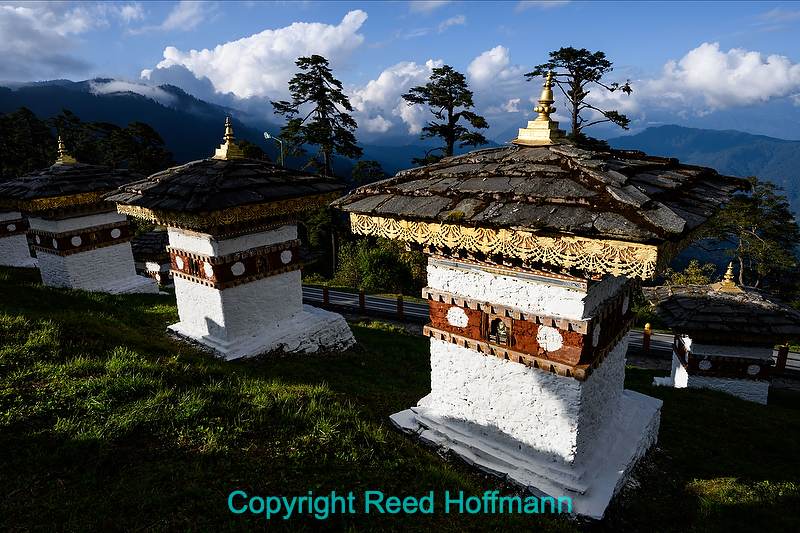
The highest point we reached was crossing Dochula Pass, at 10,000 ft. In addition to views of the nearby Himalayas, there are a many Stupas, religious monuments to honor the dead. Nikon Z 6, Aperture Priority, Sunny white balance, ISO 100, 1/250 at f/10 in Matrix metering, -0.7 EV, Nikkor AF Zoom 14-30mm f/4 lens at 19.5mm.
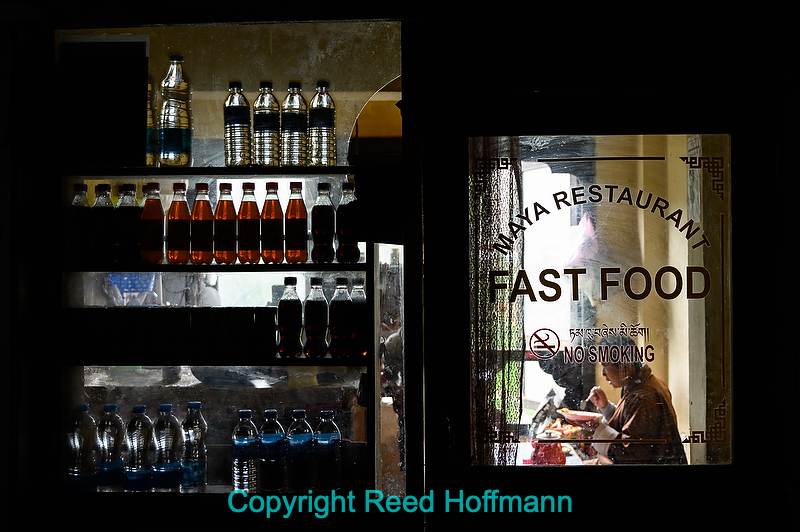
You can find good photos almost anywhere. This scene was in a stairwell we climbed to our restaurant (not this one) for lunch one day in Thimphu. Nikon Z 6, Aperture Priority, Sunny white balance, ISO 320, 1/50 at f/4 in Matrix metering, -1.0 EV, Nikkor AF Zoom 24-70mm f/4 lens at 36mm.
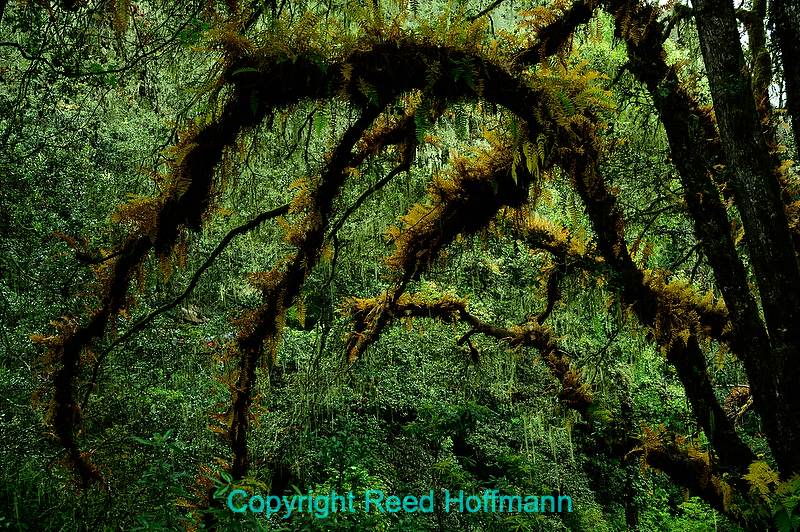
On our final day in Bhutan, we took the trail up to Paro Taktsang, also known as Tiger’s Nest. It was overcast in the morning when we started, which helped bring out the rich color of the leaves and ferns on the surrounding trees. Nikon Z 7, Aperture Priority, Sunny white balance, ISO 400, 1/100 at f/5.6 in Matrix metering, -1.0 EV, Nikkor AF Zoom 24-70mm f/4 lens at 39mm.
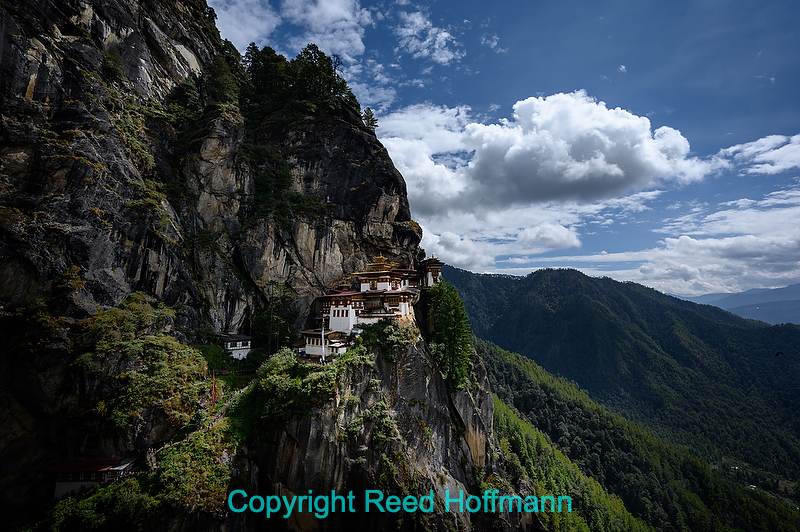
The monastery Tiger’s Nest – Paro Taktsang – is a work of beauty, perched on a cliff face at 10,000 feet. Well worth the climb up, our overcast morning turned into a beautiful day for a fabulous ending to our trip. Nikon Z 7, Aperture Priority, Sunny white balance, ISO 80, 1/1000 at f/5.6 in Matrix metering, -2.0 EV, Nikkor AF Zoom 14-30mm f/4 lens at 16.5mm, focus mode of AF-C and Picture Control set to 0300STANDARD. Photo copyright Reed Hoffmann.
(If you like this story, please share it with your friends and let them know about the links on photography that I post on my business Facebook page. I’m also on Instagram and Twitter, @reedhoffmann. And if you’re curious about the workshops I teach, you can find them here.)

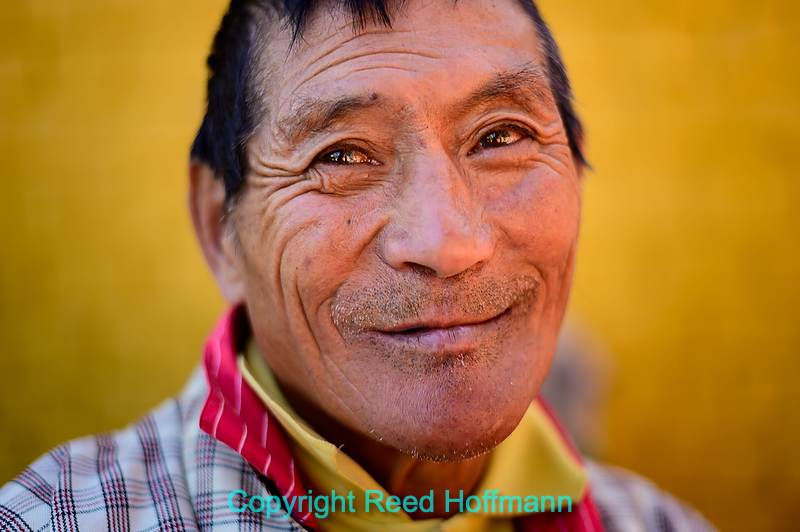
You are a genius
Thank you for sharing these…so sorry that I couldn’t do it, but such a good idea of the area and people. I really appreciate your work and will share!
I’m impressed. Take care, my good man. 😎